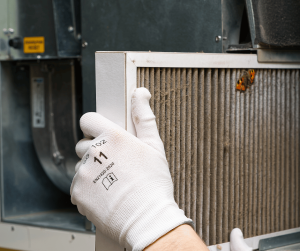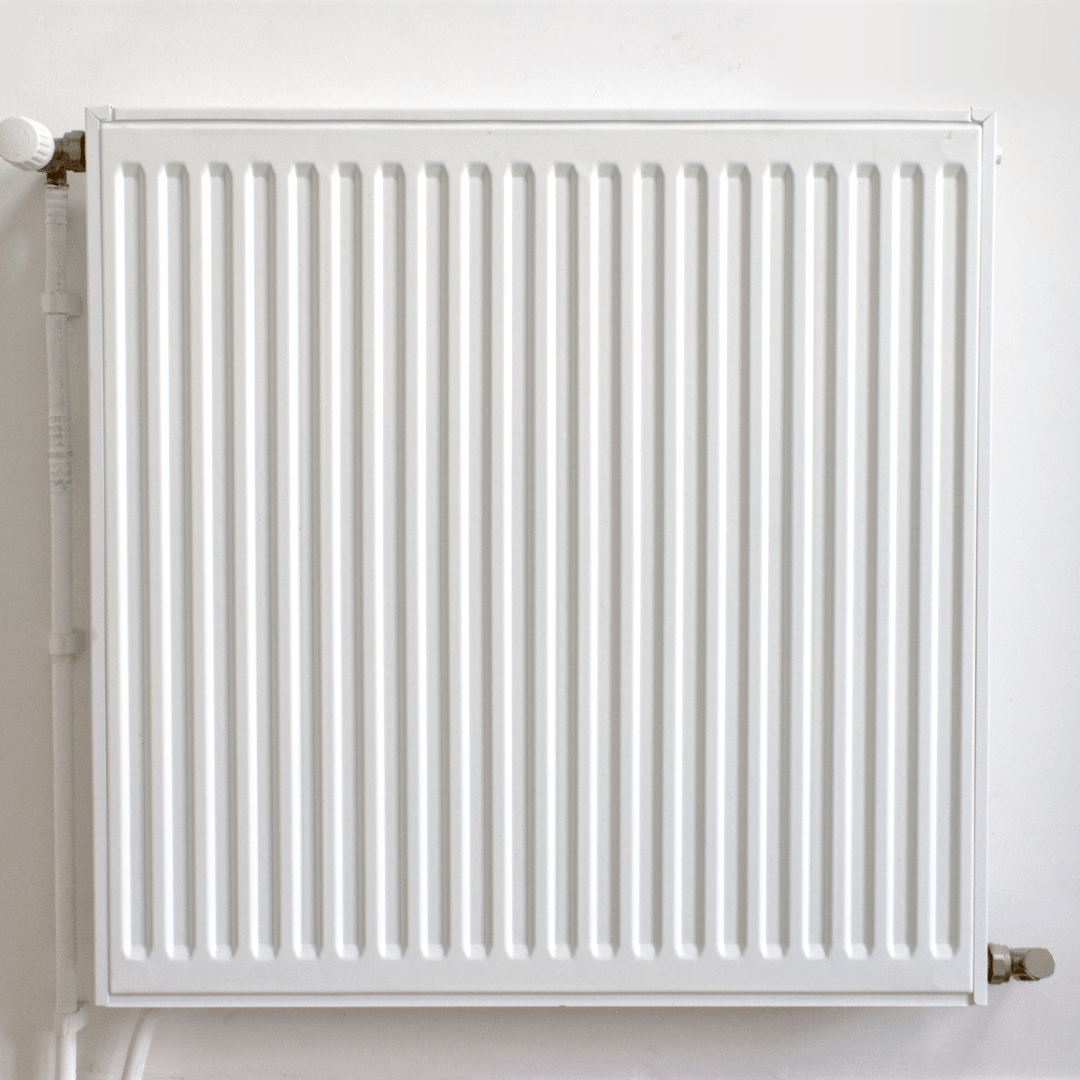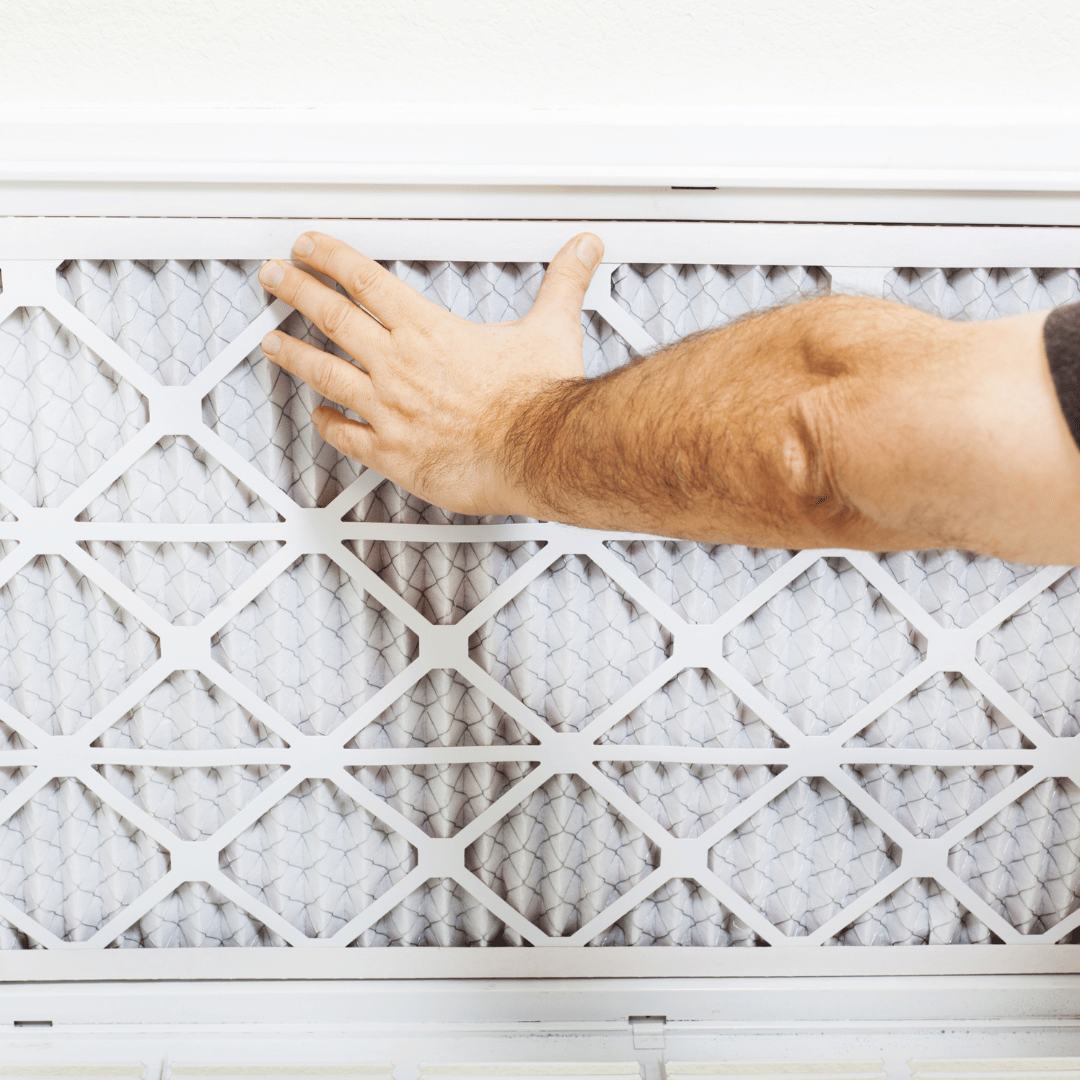
Understanding the Role of HVAC Filtration
In the realm of home maintenance, ensuring your HVAC (Heating, Ventilation, and Air Conditioning) system operates efficiently is not just about comfort—it’s also about maintaining indoor air quality and reducing energy costs. At HomeSmiles, we specialize in comprehensive interior and exterior home maintenance, addressing everything from gutter cleaning to dryer vent cleaning, to keep your home functioning smoothly and preventing costly repairs.
Importance of HVAC Filtration
HVAC filtration plays a critical role in both the performance of your system and the quality of air circulating throughout your home. The primary function of HVAC filters is to trap airborne particles such as dust, pollen, pet dander, and mold spores. By capturing these contaminants, filters prevent them from circulating back into your living spaces, thereby improving indoor air quality and reducing allergens.
Our Commitment to Home Maintenance
At HomeSmiles, we understand that a well-maintained HVAC system is essential for your comfort and health. Our 18-point home maintenance checklist ensures that every aspect of your home, from the interior to the exterior, receives the attention it needs. Whether it’s pressure washing your home’s exterior or cleaning your dryer vents, we prioritize preventative maintenance to extend the lifespan of your home’s systems and prevent costly repairs down the line.
Overview of This Article
In this article, we delve into the intricacies of HVAC filtration. We’ll explore the types of filters available, the benefits of integrating air purifiers with your HVAC system, and practical tips for filter maintenance. Additionally, we’ll address common questions, such as the cost of adding air purifiers to HVAC systems and why HVAC filters vary in price. By the end, you’ll have a comprehensive understanding of how HVAC filtration contributes to a healthier, more efficient home environment.
Stay tuned as we uncover the essentials of HVAC filtration and how HomeSmiles can help you maintain optimal indoor air quality and system performance.
What is Filtration in HVAC?
Filtration in HVAC systems is a critical component designed to improve indoor air quality by capturing and removing airborne contaminants before air is circulated throughout your home. Here’s a closer look at how HVAC filtration works and its importance:
How HVAC Filtration Works:
HVAC filters are typically made from materials like fiberglass, pleated paper, polyester, or electrostatic cotton. These filters are installed in the return air ducts of your HVAC system, where they act as barriers to trap particles that can affect air quality and system efficiency.
Types of HVAC Filters:
- Standard Filters:
- Made from disposable materials like fiberglass or pleated paper.
- Effectively capture larger particles but may have limited efficiency against smaller contaminants.
- High-Efficiency Particulate Air (HEPA) Filters:
- Made from dense, pleated material that can capture up to 99.97% of particles as small as 0.3 microns.
- Ideal for households with allergy or asthma concerns, providing superior air filtration.
- Electrostatic Filters:
- Use static electricity to attract and capture particles.
- Can be reusable (washable) or disposable, offering better filtration efficiency than standard filters.
Importance of HVAC Filtration:
- Improved Indoor Air Quality: Filters remove dust, pollen, pet dander, mold spores, and other allergens from the air, promoting cleaner, healthier indoor environments.
- Enhanced System Efficiency: Clean filters allow for better airflow, reducing strain on the HVAC system and improving energy efficiency.
- Extended System Lifespan: Regular filter changes prevent buildup of debris that can lead to system malfunctions and costly repairs.
Understanding HVAC filtration is essential for maintaining a comfortable and healthy home environment. Whether you opt for standard filters, HEPA filters, or electrostatic options, choosing the right filtration method can significantly impact indoor air quality and system performance. In the next section, we’ll explore whether integrating air purifiers with HVAC systems is worth the investment, providing further insights into enhancing indoor air quality.
Are HVAC Air Purifiers Worth It?
HVAC air purifiers are designed to enhance indoor air quality by supplementing the filtration capabilities of your HVAC system. Let’s explore whether integrating air purifiers with HVAC systems is worth the investment:
Benefits of HVAC Air Purifiers:
- Enhanced Filtration Efficiency:
- Air purifiers can capture smaller particles that standard HVAC filters may miss, including bacteria, viruses, and volatile organic compounds (VOCs).
- This improves overall air quality and reduces potential health risks associated with airborne contaminants.
- Allergy and Asthma Relief:
- For individuals with allergies or asthma, air purifiers with HEPA filters can significantly reduce triggers like pollen, dust mites, and pet dander.
- HEPA filtration removes up to 99.97% of particles down to 0.3 microns in size, providing relief from respiratory symptoms.
- Odor and Chemical Reduction:
- Some air purifiers feature activated carbon filters that adsorb odors, smoke, and harmful gases like formaldehyde and ozone.
- This helps create a fresher indoor environment by neutralizing unpleasant smells and chemical pollutants.
Considerations for Choosing an Air Purifier:
- Room Size and Coverage: Select an air purifier that matches the square footage of the room or area it will serve.
- Filter Replacement Costs: Evaluate ongoing maintenance costs, including filter replacements, which can vary based on filter type and frequency.
Cost-effectiveness of HVAC Air Purifiers:
While initial costs for installing an air purifier with your HVAC system can vary, the long-term benefits in improved air quality and reduced health risks can outweigh the investment. Homeowners concerned about indoor air quality and seeking comprehensive preventative maintenance solutions may find air purifiers beneficial.
Incorporating air purifiers into HVAC systems can be a valuable investment for enhancing indoor air quality and creating a healthier home environment. Whether you prioritize allergy relief, odor control, or overall air purification, choosing the right air purifier can complement existing HVAC filtration and provide additional benefits.
How Much Does It Cost to Add an Air Purifier to HVAC?
Integrating an air purifier with your HVAC system can vary in cost depending on several factors. Let’s explore the typical expenses associated with adding an air purifier to HVAC:
Factors Influencing Installation Costs:
- Type of Air Purifier:
- Whole-House Air Purifiers: These units are integrated into the HVAC system and treat air throughout the entire home. Installation costs range from $1,000 to $5,000, depending on the complexity and size of the system.
- Portable Air Purifiers: These standalone units are placed in specific rooms and range in price from $100 to $1,000. They provide localized air purification and are more affordable upfront.
- System Compatibility:
- Retrofitting an air purifier into an existing HVAC system may require additional adjustments and labor costs.
- Newer HVAC systems often have built-in compatibility features for air purifiers, simplifying installation and potentially lowering costs.
- Additional Features:
- High-efficiency air purifiers with advanced filtration technologies, such as HEPA filters or UV-C light, may come at a higher initial cost but offer superior air cleaning capabilities.
Maintenance and Operational Costs:
- Filter Replacements: Budget for regular filter replacements to maintain optimal performance and air quality.
- Energy Consumption: Consider the impact on energy bills, as some air purifiers may increase electricity usage.
Return on Investment:
- Improved indoor air quality can lead to fewer respiratory issues, reduced allergy symptoms, and a healthier living environment.
- Long-term savings on medical expenses and improved HVAC system efficiency can contribute to the overall value of investing in an air purifier.
The cost of adding an air purifier to your HVAC system varies based on the type of purifier, installation requirements, and ongoing maintenance. While initial expenses may be significant, the benefits of cleaner air and potential savings on health and HVAC maintenance costs can make it a worthwhile investment. Next, we’ll explore the average cost of HVAC filters and factors that influence their pricing.
How Much Does an HVAC Filter Cost?
Understanding the cost of HVAC filters is essential for budgeting and maintaining your HVAC system effectively. Here’s a breakdown of the typical costs associated with HVAC filters:
Types of HVAC Filters and Their Costs:
- Standard Disposable Filters:
- These filters are the most common and typically the least expensive option.
- Prices range from $5 to $20 per filter, depending on size and brand.
- Pleated Filters:
- Offer higher filtration efficiency than standard disposable filters.
- Prices range from $10 to $30 per filter, depending on size and MERV (Minimum Efficiency Reporting Value) rating.
- High-Efficiency Filters (HEPA Filters):
- Provide superior filtration capabilities, capturing up to 99.97% of particles.
- Prices range from $20 to $100 or more per filter, depending on size and brand.
Factors Affecting HVAC Filter Costs:
- Filter Size and Type: Larger or specialized filters may cost more.
- MERV Rating: Higher MERV-rated filters offer better filtration but may come at a higher price.
- Quantity Purchased: Buying filters in bulk can sometimes result in cost savings per unit.
Long-Term Savings Considerations:
- Energy Efficiency: Higher-quality filters can improve HVAC system efficiency, potentially lowering energy bills over time.
- Air Quality Improvement: Cleaner filters contribute to better indoor air quality, reducing health-related costs and improving overall comfort.
The cost of HVAC filters varies based on type, size, and filtration efficiency. While standard disposable filters are more budget-friendly, investing in higher-efficiency filters like pleated or HEPA filters can provide long-term benefits in terms of air quality and system performance. Regularly replacing filters according to manufacturer recommendations is key to maintaining HVAC efficiency and prolonging the lifespan of your system. Next, we’ll discuss the recommended frequency for changing HVAC filters and why it’s important.
How Often Should HVAC Filters Be Changed?
Regularly changing HVAC filters is crucial for maintaining system efficiency and indoor air quality. Here’s a guide to understanding when and how often you should replace your HVAC filters:
Recommended Frequency for Changing HVAC Filters:
- Standard Filters (Disposable):
- Generally, these filters should be replaced every 1 to 3 months.
- Factors such as household size, pets, allergies, and local air quality can affect replacement frequency.
- Pleated Filters:
- These filters typically have a longer lifespan and can last up to 3 to 6 months before replacement.
- Regular inspection is recommended to assess filter condition and determine replacement timing.
- High-Efficiency Filters (HEPA Filters):
- HEPA filters can last longer, often up to 6 to 12 months, depending on usage and environmental conditions.
- Follow manufacturer recommendations for optimal performance and air quality maintenance.
Signs That HVAC Filters Need Replacement:
- Decreased Airflow: A noticeable reduction in airflow from vents may indicate a clogged filter.
- Increased Energy Bills: Reduced HVAC efficiency due to a dirty filter can lead to higher energy consumption.
- Visible Dirt and Debris: Inspect filters regularly; if visibly dirty or discolored, it’s time for replacement.
Importance of Regular Filter Changes:
- Maintains System Efficiency: Clean filters allow for better airflow, reducing strain on the HVAC system and improving energy efficiency.
- Enhances Indoor Air Quality: Fresh filters capture more airborne particles, promoting cleaner air and reducing allergens.
- Extends HVAC System Lifespan: Prevents dust buildup and potential damage to HVAC components, minimizing repair costs over time.
Understanding the recommended frequency for changing HVAC filters is essential for maximizing system performance and indoor air quality. By regularly replacing filters according to manufacturer guidelines and monitoring filter condition, homeowners can ensure their HVAC systems operate efficiently and maintain a healthier living environment. In the final section, we’ll address common questions about HVAC filters and provide additional tips for maintaining optimal system performance.
Common Questions About HVAC Filters
As homeowners prioritize indoor air quality and HVAC system efficiency, several common questions arise regarding HVAC filters. Here are answers to frequently asked questions:
How Do You Clean Gutter Downspouts?
Cleaning gutter downspouts involves several steps to ensure they function properly and efficiently direct water away from your home:
- Clear Debris: Remove any leaves, twigs, or debris from the gutter using a scoop or garden trowel.
- Flush with Water: Use a garden hose to flush out remaining debris and check for proper water flow.
- Inspect for Clogs: For downspouts that go into the ground, use a plumber’s snake or hose to clear any blockages.
How Do You Clean Downspouts That Go Into the Ground?
Cleaning downspouts that extend into the ground requires careful attention to prevent clogs and ensure proper drainage:
- Remove Downspout Extension: Disconnect the downspout extension from the ground to access the interior.
- Clear Debris: Use a plumber’s snake or hose to remove debris and check for obstructions.
- Reattach Extension: Once cleaned, reattach the downspout extension securely to the gutter system.
How Often Should Downspouts Be Cleaned?
Regular maintenance is key to preventing clogs and ensuring downspouts function effectively. Clean gutters and downspouts at least twice a year, ideally in spring and fall, to remove seasonal debris and prevent potential water damage.
Do Gutter Downspouts Get Clogged?
Yes, gutter downspouts can become clogged with leaves, twigs, and other debris, especially during fall and spring when debris accumulation is common. Regular cleaning and maintenance are essential to prevent clogs and ensure proper water drainage away from your home.
How Do You Unblock Gutter Downspouts?
If a gutter downspout becomes clogged, follow these steps to unblock it and restore proper water flow:
- Remove Debris: Use a scoop or trowel to clear visible debris from the top of the downspout.
- Flush with Water: Use a garden hose to flush out remaining debris and check for blockages.
- Use a Plumber’s Snake: For stubborn clogs, insert a plumber’s snake into the downspout to dislodge debris and restore flow.
How Do You Keep Downspouts Clear?
To maintain clear downspouts and prevent future clogs, consider the following preventative measures:
- Install Gutter Guards: These devices help keep leaves and debris out of gutters, reducing the likelihood of downspout clogs.
- Regular Maintenance: Schedule routine gutter cleaning and inspection to remove debris and ensure downspouts remain clear.
Proper maintenance of gutter downspouts is crucial for protecting your home from water damage and ensuring efficient water drainage. By following these tips and conducting regular inspections and cleaning, homeowners can maintain clear, functional downspouts year-round. In the final section of this article, we’ll summarize key points and emphasize the importance of preventative home maintenance with HomeSmiles.
Maintaining optimal HVAC filtration is essential for both indoor air quality and the longevity of your HVAC system. By understanding the different types of filters available, their costs, and the recommended maintenance practices, homeowners can ensure a healthier and more efficient home environment.
Throughout this article, we’ve explored the fundamentals of HVAC filtration, including the types of filters such as standard, pleated, and HEPA filters, each offering varying levels of filtration efficiency. We discussed the benefits of integrating air purifiers with HVAC systems to further enhance air quality, especially beneficial for allergy sufferers and those seeking cleaner indoor environments.
Cost considerations were also highlighted, from the initial investment of adding an air purifier to ongoing filter replacement costs. While higher-quality filters and air purifiers may have higher upfront costs, they contribute to long-term savings by improving energy efficiency, reducing HVAC maintenance needs, and promoting better health outcomes.
Understanding the recommended frequency for changing HVAC filters—whether disposable, pleated, or HEPA—is crucial for maintaining efficient HVAC operation. Regular filter changes not only ensure cleaner air but also prevent strain on the HVAC system, extending its lifespan and reducing the likelihood of costly repairs.
Lastly, we addressed common questions about HVAC filters and provided practical tips for cleaning gutter downspouts, emphasizing the importance of exterior home maintenance in safeguarding against water damage and ensuring proper drainage.
At HomeSmiles, we are committed to providing comprehensive preventative home maintenance solutions that encompass both interior and exterior care. By staying proactive with our 18-point maintenance checklist, we help homeowners avoid costly repairs down the line and enjoy a more comfortable and resilient living space.
For more information on how HomeSmiles can assist with your home maintenance needs, including gutter cleaning, pressure washing, and HVAC filter inspections, contact us today. Together, we can ensure your home remains in optimal condition year-round.
- Protecting Your Property: Why the Right Cleaning Method Makes All the Difference
- The #1 Thing That’s Dulling Your Curb Appeal (And How to Fix It)
- How Maintenance Bundles Provide Peace of Mind for Busy Small Business Owners and Facility Managers
- Essential vs. Complete Home Packages: Choosing the Right Preventive Care for Your Property
- How a Simplified Service Model Benefits Both Homeowners and Franchisees Alike


